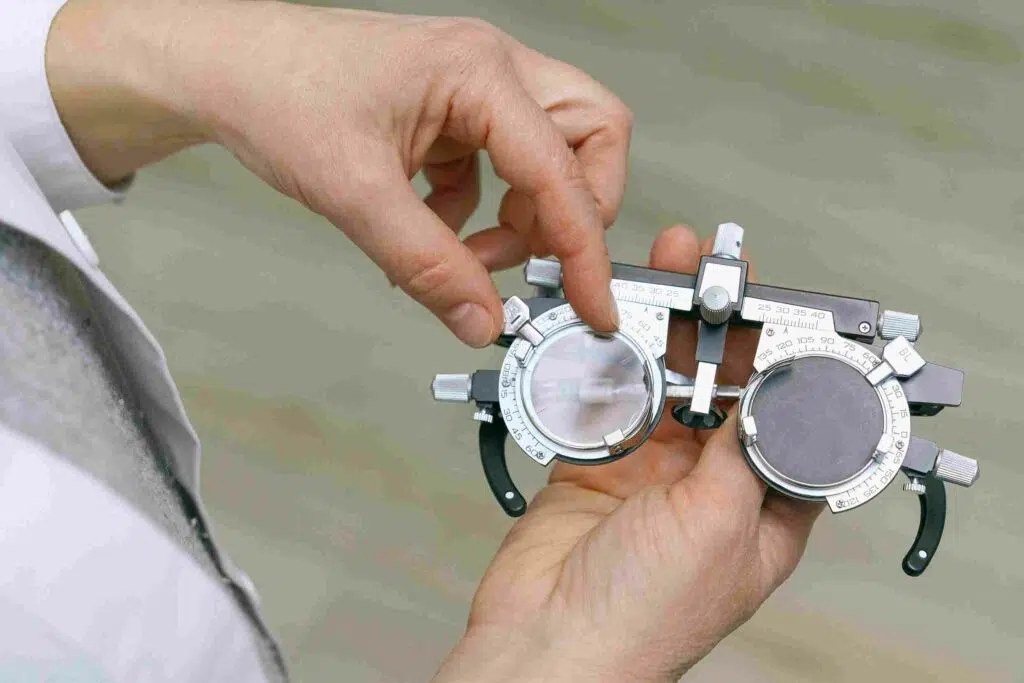If you are considering laser eye surgery, you may have heard about the new trans-PRK procedure. This is a relatively new technique that has been gaining in popularity due to its many benefits. In this blog post, we will discuss what trans-PRK is, how it works, and who is a good candidate for the procedure. We will also answer some common questions about trans-PRK.
Contents
What Is Trans-PRK?

Trans-PRK is a new vision correction procedure that has been developed to improve upon the traditional PRK (photorefractive keratectomy) surgery. Trans-PRK is similar to PRK in that it uses a laser to reshape the curvature of the cornea. However, there are several key differences between the two procedures.
What Is The Difference Between PRK And Trans-PRK?
PRK and Trans-PRK are both procedures used to correct vision. They are similar in that they both use a laser to remove tissue from the surface of the eye. The difference between the two is that with PRK, the surgeon removes the outer layer of the cornea (the epithelium) before performing the procedure. With Trans-PRK, the epithelium is removed after the procedure is completed.
It has a number of advantages over PRK. First, it is less likely to cause pain after the procedure. Second, the recovery time is shorter with Trans-PRK. Trans-PRK can be performed on patients with thinner corneas than PRK.
If you are considering vision correction surgery, be sure to ask your surgeon if this surgery is an option for you.
Is Trans-PRK Surgery Risky?
This is still a relatively new surgical procedure, and as with any surgery, there are certain risks involved. However, these risks are typically very low and can be effectively managed by an experienced surgeon. The most common complication from this surgery is corneal haze, which can cause blurred vision. This usually resolves within a few months and can be treated with corticosteroid eye drops.
Another potential complication is an infection, which can occur with any type of surgery. However, the risk of infection after is very low, thanks to the use of sterile techniques and antibiotics.
It’s also possible to experience dry eye after surgery, though this is typically temporary and can be managed with artificial tears or other treatments. In rare cases, more serious complications such as corneal ulcers may occur. These can usually be treated with medications or additional surgery.
Overall, this is considered a safe and effective surgical procedure with a low risk of complications. However, as with any surgery, it’s important to discuss the risks and benefits with your surgeon before making a decision.
Who Are The Best Candidates For Trans-PRK?
The best candidates are those who:
- Have mild to moderate levels of myopia
- Have healthy corneas
- Do not have large pupils
- Have not had previous refractive surgery
- Are not pregnant or breastfeeding
- Are not suffering from any other eye conditions
What Is The Procedure For Trans-PRK?

The procedure is as follows:
- The cornea is numbed with anesthetic eye drops.
- Next, the surface layer of the cornea (epithelium) is gently removed using a device called a microkeratome or a femtosecond laser. This creates a very thin flap of tissue that is lifted up, exposing the middle layer of the cornea (stroma).
- The next step is to apply the excimer laser to the surface of the stroma. The laser uses a cool ultraviolet light beam to precisely remove small amounts of tissue from the cornea. This changes the shape of the cornea, which helps to correct vision problems.
- After the laser treatment is completed, the flap of tissue is then replaced in its original position. The epithelial cells will begin to grow back over the next few days, and the eye will heal itself.
It is a newer version of photorefractive keratectomy (PRK). In PRK, the entire surface layer of the cornea (epithelium) is removed before the laser treatment. With Trans-PRK, only a very thin layer of tissue is removed, which helps to speed up the healing process.
What Is The Cost Of Trans-PRK?
 The cost of Trans-PRK will vary depending on the surgeon and the location of the procedure.
The cost of Trans-PRK will vary depending on the surgeon and the location of the procedure.
The cost of Trans PRK surgery is typically 35000-40,000 INR. This cost range does not include the price of ancillary testing or postoperative care.
What Are The Benefits?
There are many benefits, including:
Shorter healing time
This means that there is no need for a bandage contact lens after the procedure, which reduces healing time. The epithelium (outermost layer of the cornea) is removed before the laser treatment Trans-PRK.
Reduced pain
Since there is no need to remove the epithelium, patients usually experience less pain.
Improved safety
There is a lower risk of complications with this surgery since there is no need to use a blade to remove the epithelium.
Better vision
Some studies have shown that this may result in better vision than traditional PRK, due to the reduced risk of corneal haze.
Limitations
There are various limitations:
- Not recommended for patients with very large pupils, as this can result in an increased risk of complications such as glare and halos.
- It may not be suitable for patients who have had previous refractive surgery, such as LASIK.
- The procedure may not be effective in treating certain types of refractive errors, such as high levels of astigmatism.
These are the various limitations of trans-PRK. While considering this procedure always consider these limitations.
Conclusion
It may be concluded that Trans-PRK is a new and effective way of treating refractive errors. This procedure has shown to be an improvement over traditional PRK, with patients reporting less pain and quicker recovery times. It may be the best option for those who are looking for an alternative to LASIK surgery.
Therefore, contact Eye Mantra for advanced surgical options for your eyes including PRK, Femto Lasik, SMILE surgery, Standard LASIK, and Contoura vision. If you have any questions on LASIK surgery, LASIK surgery cost, and LASIK procedure, call us at +91-9711116605 or email at [email protected].


